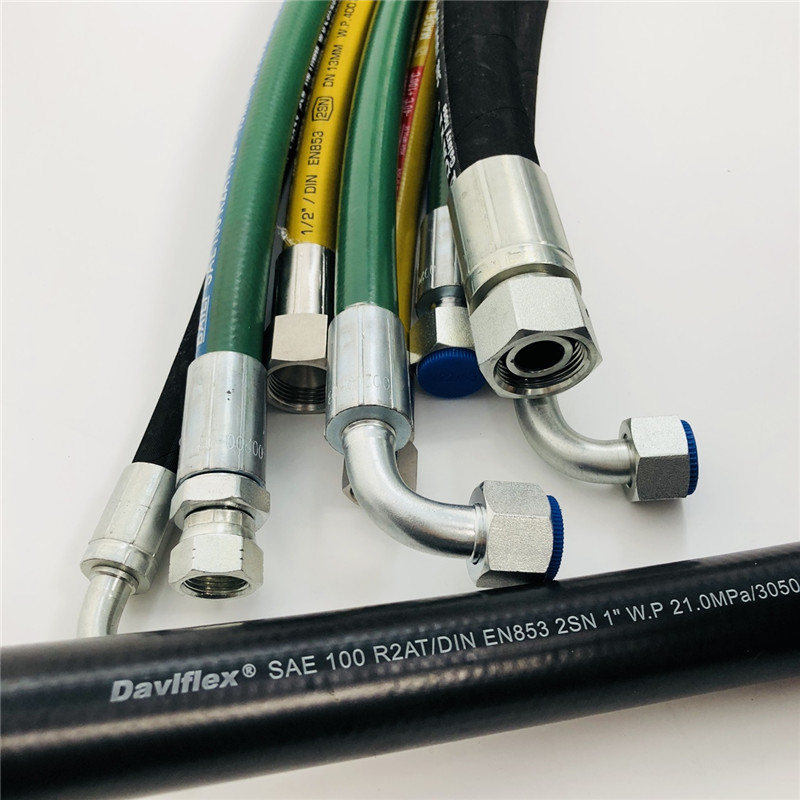335345435
Dic . 14, 2024 08:36 Back to list
Hydraulic Suction Hose Fittings and Their Importance in Fluid Transfer Systems
Understanding Hydraulic Suction Hose Fittings An Essential Component in Hydraulic Systems
Hydraulic systems are pivotal in various industries, offering powerful and efficient solutions for various applications, ranging from agriculture to construction. One crucial component within these systems is the hydraulic suction hose fitting. Understanding these fittings and their importance can significantly enhance the efficiency and reliability of hydraulic systems.
What are Hydraulic Suction Hose Fittings?
Hydraulic suction hose fittings are specialized components designed to connect hoses within hydraulic systems. They allow fluid to be drawn from a reservoir or supply tank, facilitating the transfer of hydraulic fluid to pumps and other system components. These fittings are essential in maintaining a secure and leak-free connection, ensuring optimal system performance.
Types of Hydraulic Suction Hose Fittings
Hydraulic suction hose fittings come in various types, each suited for specific applications and hose sizes. Some common types include
1. NPT (National Pipe Thread) Fittings These are tapered fittings that provide a tight seal as they are screwed together. NPT fittings are widely used for their ease of installation and versatility.
2. BSP (British Standard Pipe) Fittings Similar to NPT but with different thread geometry, BSP fittings are common in European applications. They come in both tapered and parallel styles.
3. Cam Lock Fittings Known for their quick connect and disconnect capabilities, cam lock fittings are often used in applications where frequent hose changes are required. They utilize a cam lever to secure the connection.
4. Flanged Fittings These fittings use a flat surface with holes for bolts to secure the hose to the equipment. Flanged fittings are ideal for larger hoses and high-pressure applications.
hydraulic suction hose fittings

Importance of Choosing the Right Fitting
Selecting the appropriate hydraulic suction hose fitting is crucial for the efficiency and reliability of the hydraulic system. The right fitting ensures compatibility with the hose, prevents leaks, and withstands the pressure and temperature demands of the specific application. Using incompatible fittings can lead to failures, resulting in downtime and repair costs.
Materials Used in Hydraulic Suction Hose Fittings
Hydraulic fittings are generally manufactured from durable materials to resist corrosion and wear. Common materials include
- Steel Strong and resilient, steel fittings are commonly used in high-pressure applications. - Stainless Steel This material offers excellent resistance to corrosion, making it suitable for environments exposed to moisture or chemicals. - Aluminum Lightweight and resistant to rust, aluminum fittings are often used in lighter applications where weight is a concern.
Maintenance and Care
Regular maintenance of hydraulic suction hose fittings is essential to ensure longevity and performance. Checking for signs of wear, leaks, and proper sealing can help prevent costly breakdowns. In addition, making sure that fittings are adequately tightened and not subject to over-tension can serve to extend their lifespan.
Conclusion
Hydraulic suction hose fittings are an integral part of hydraulic systems. Their role in connecting hoses and facilitating fluid transfer is critical to the operational efficiency and safety of these systems. By understanding the types of fittings available, choosing the appropriate material, and maintaining them properly, users can ensure the long-term reliability of their hydraulic applications. Whether in agricultural machinery, construction equipment, or industrial machines, the choice of hydraulic suction hose fittings can make all the difference in achieving optimal performance.
-
SAE 100 R17 Black Smooth Cover Hydraulic Hose
NewsMar.07,2025
-
SAE 100 R17 Black Smooth Cover Hydraulic Hose
NewsMar.07,2025
-
SAE 100 R17 Black Smooth Cover Hydraulic Hose
NewsMar.07,2025
-
SAE 100 R17 Black Smooth Cover Hydraulic Hose
NewsMar.07,2025
-
SAE 100 R17 Black Smooth Cover Hydraulic Hose
NewsMar.07,2025
-
steel wire braided hydraulic hose
NewsMar.07,2025



